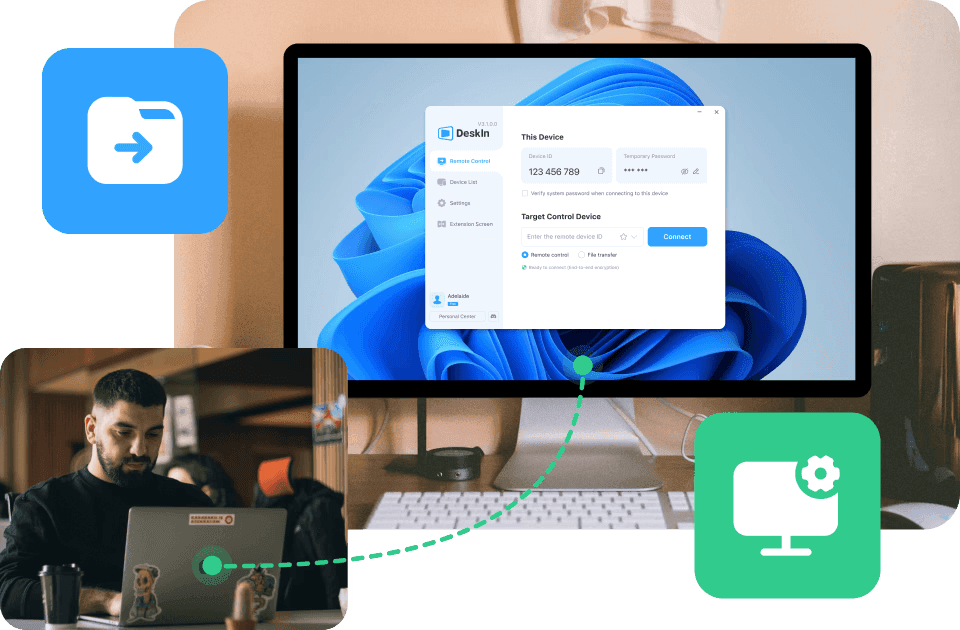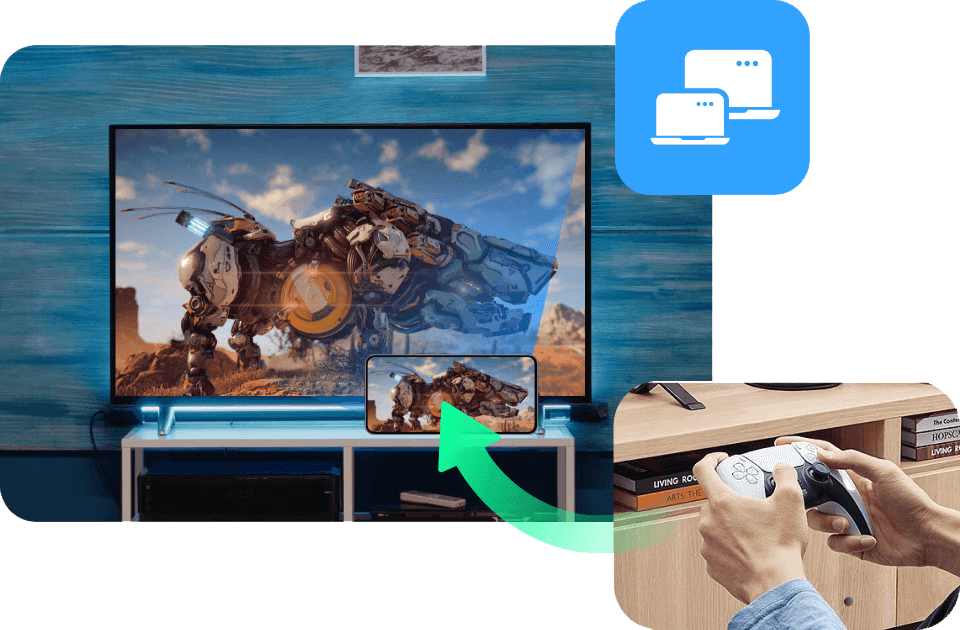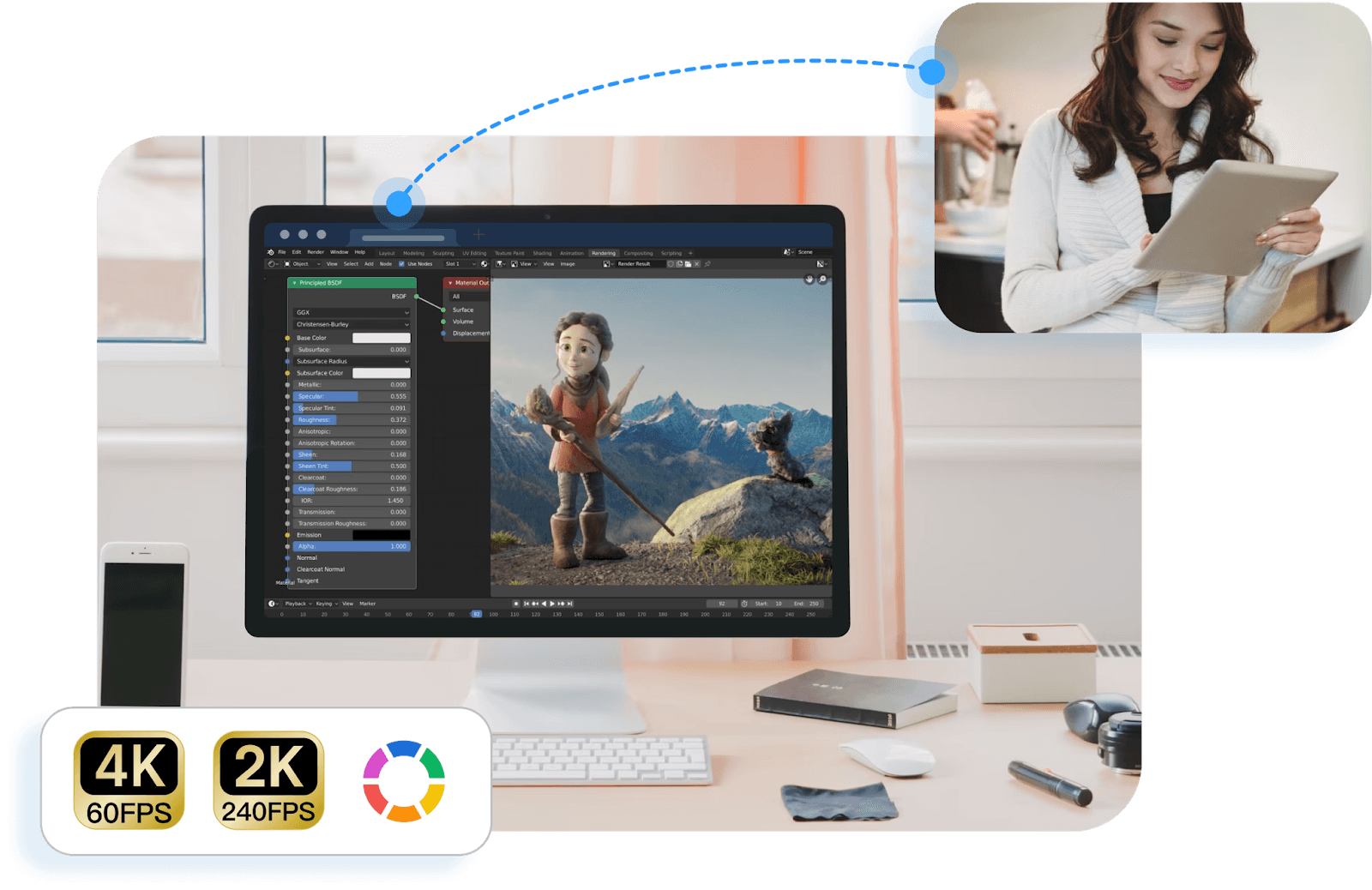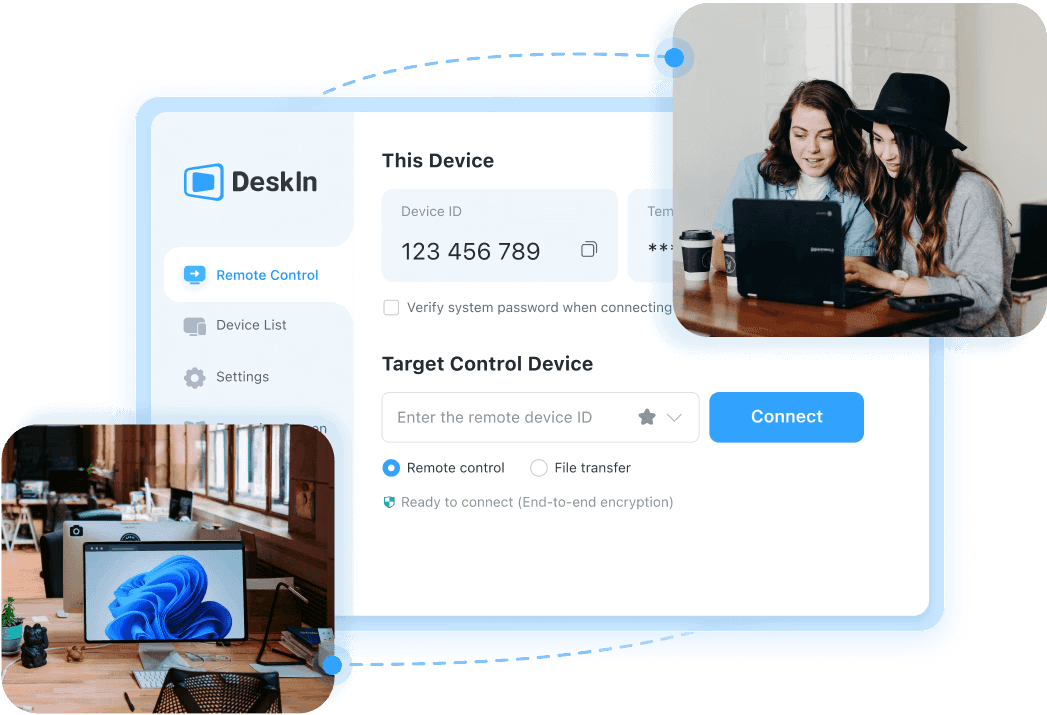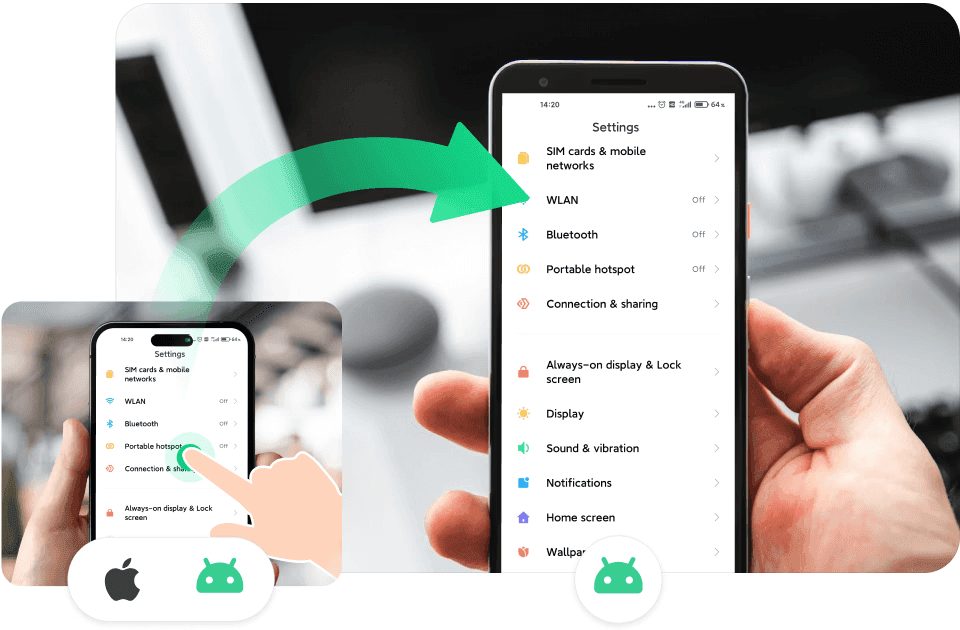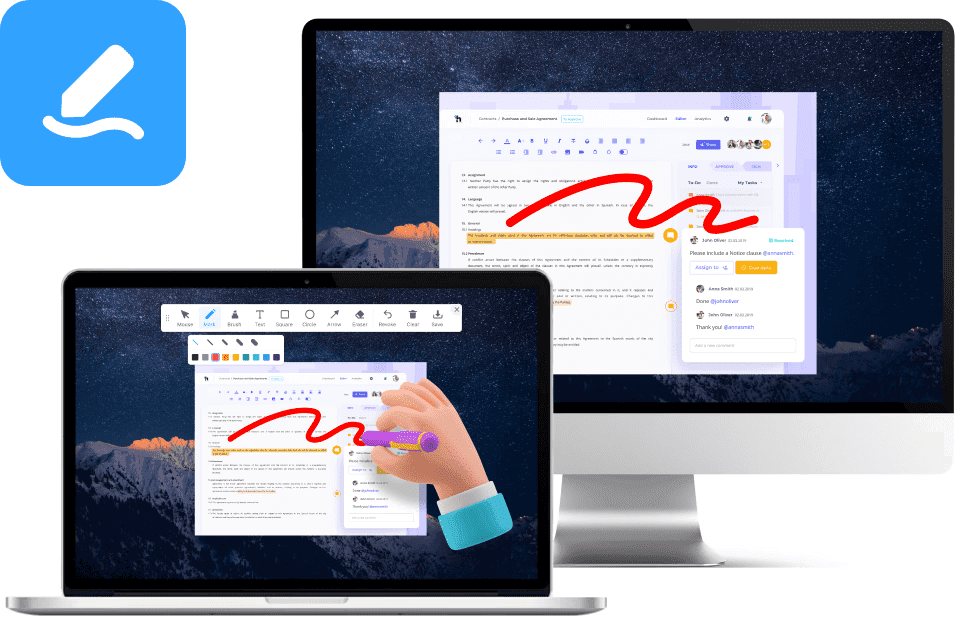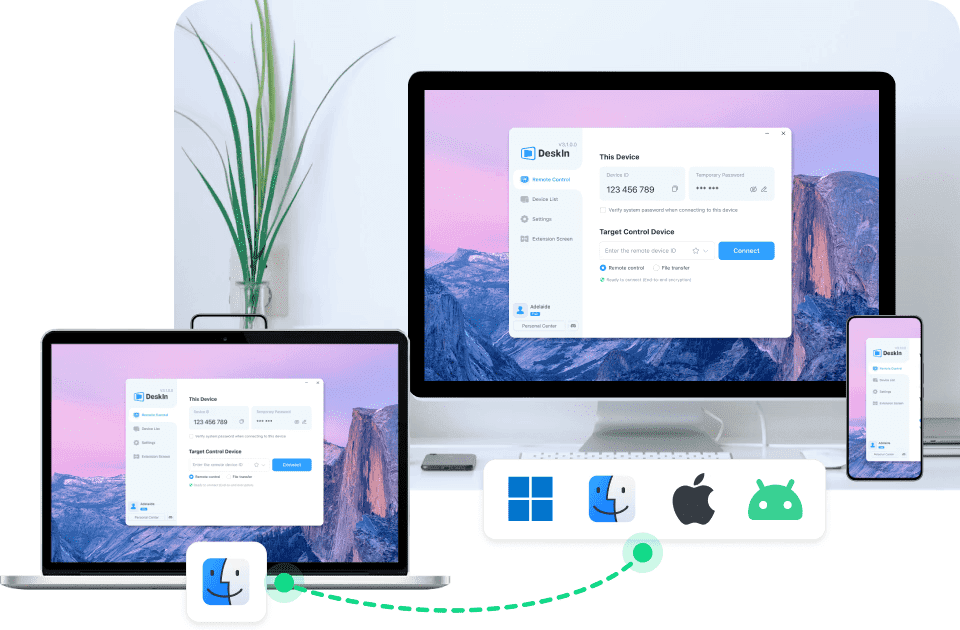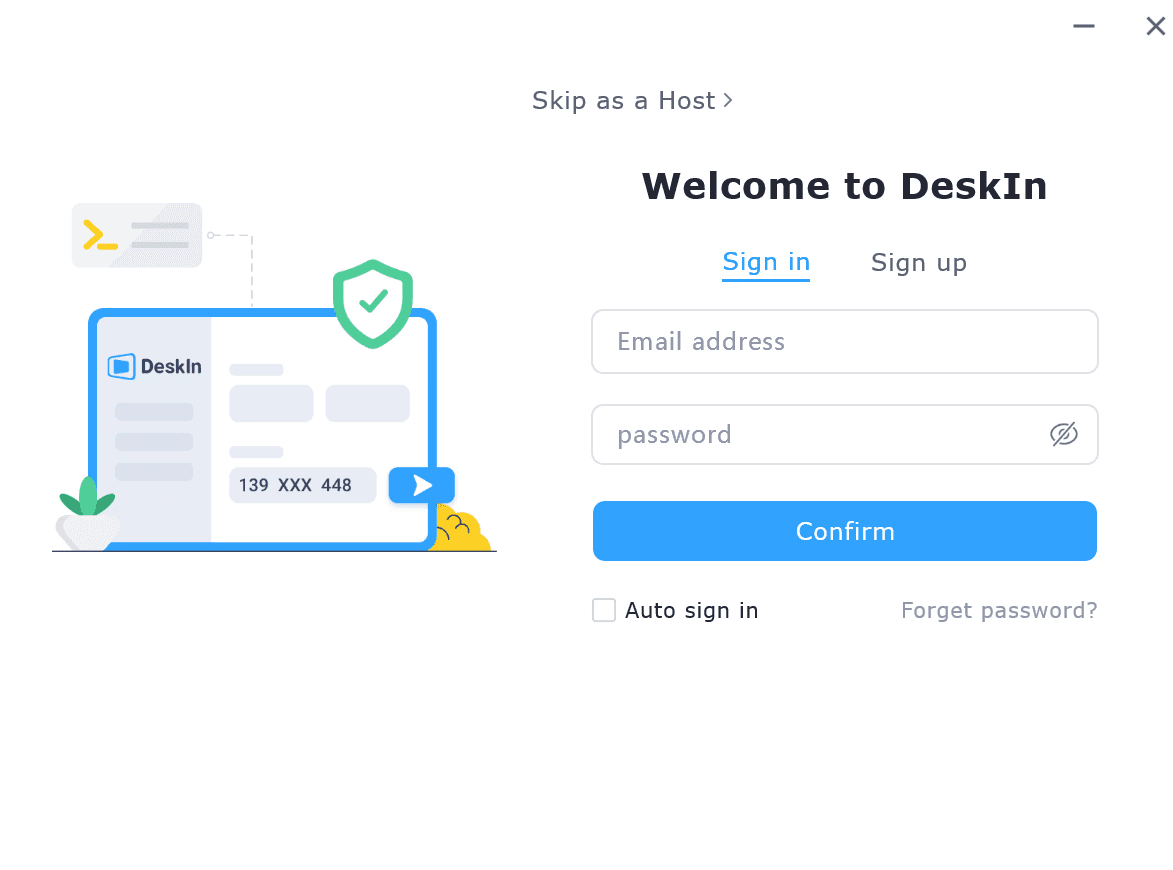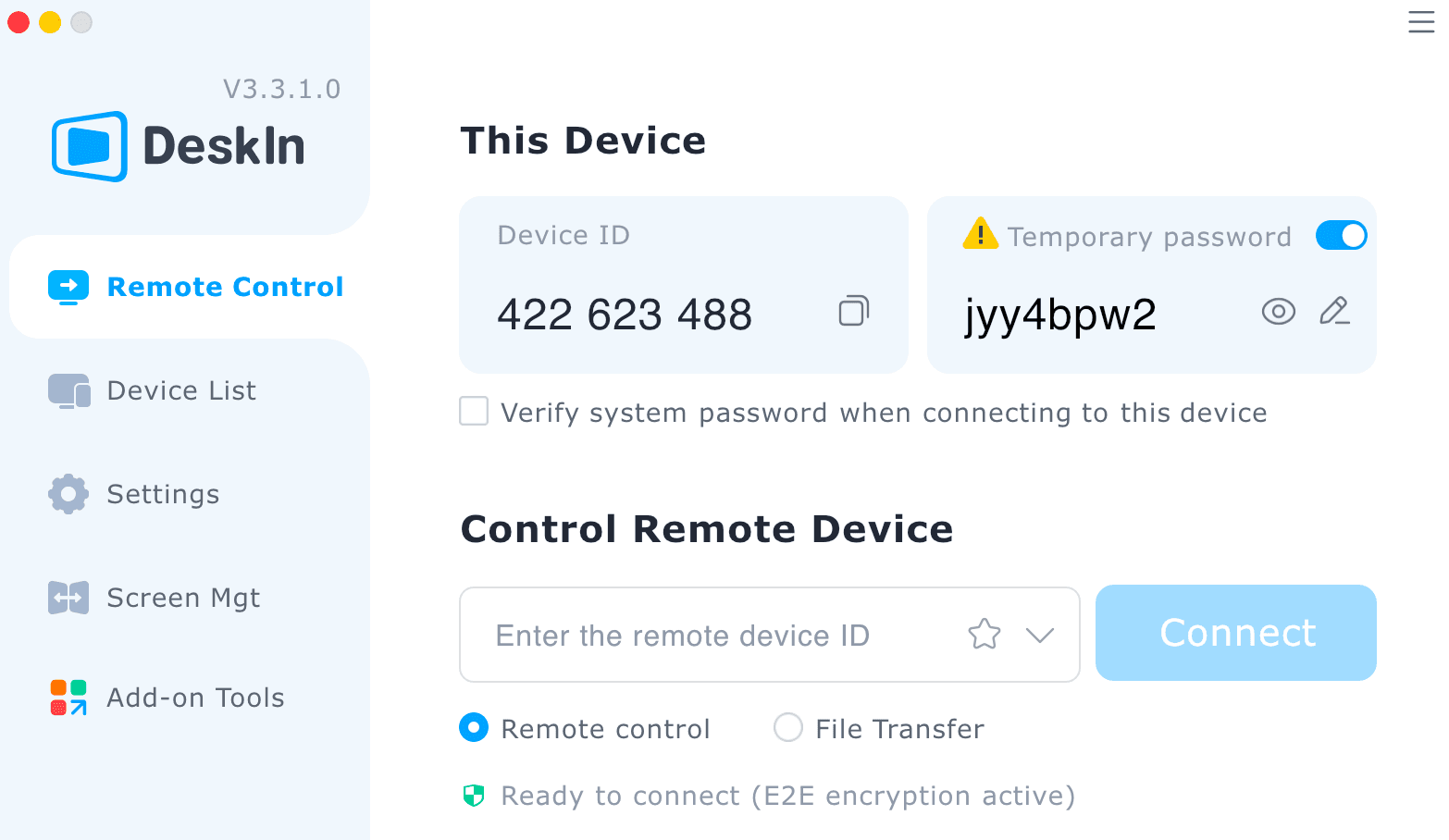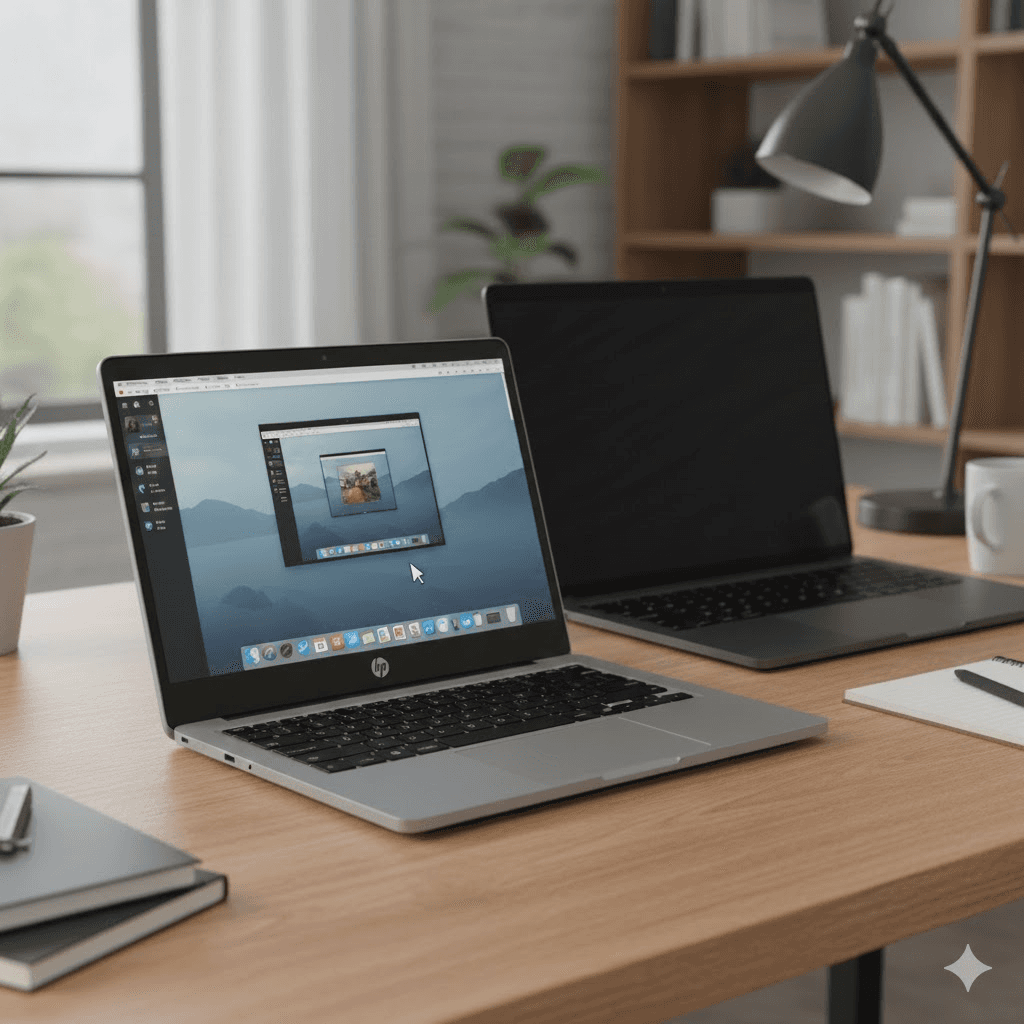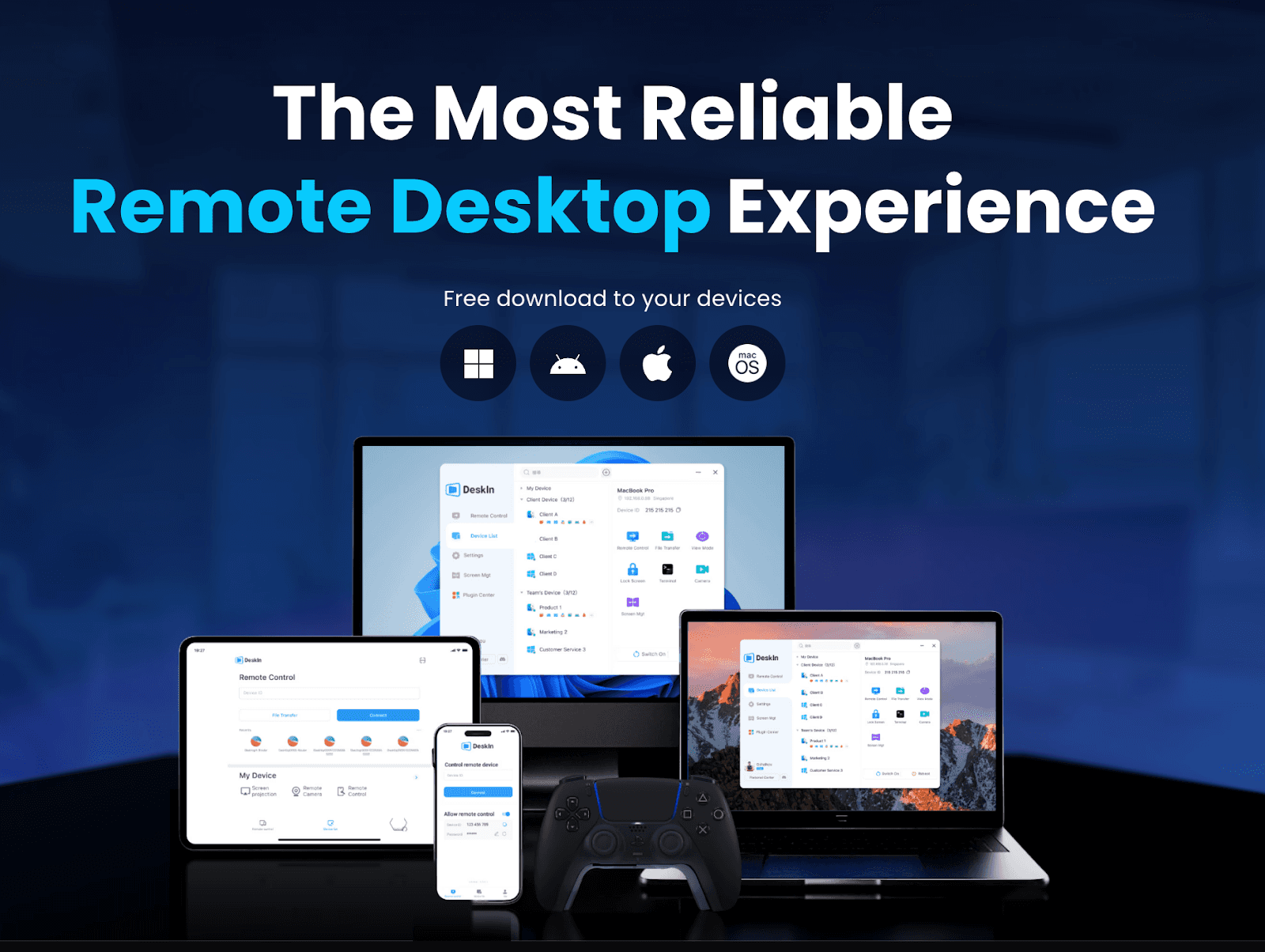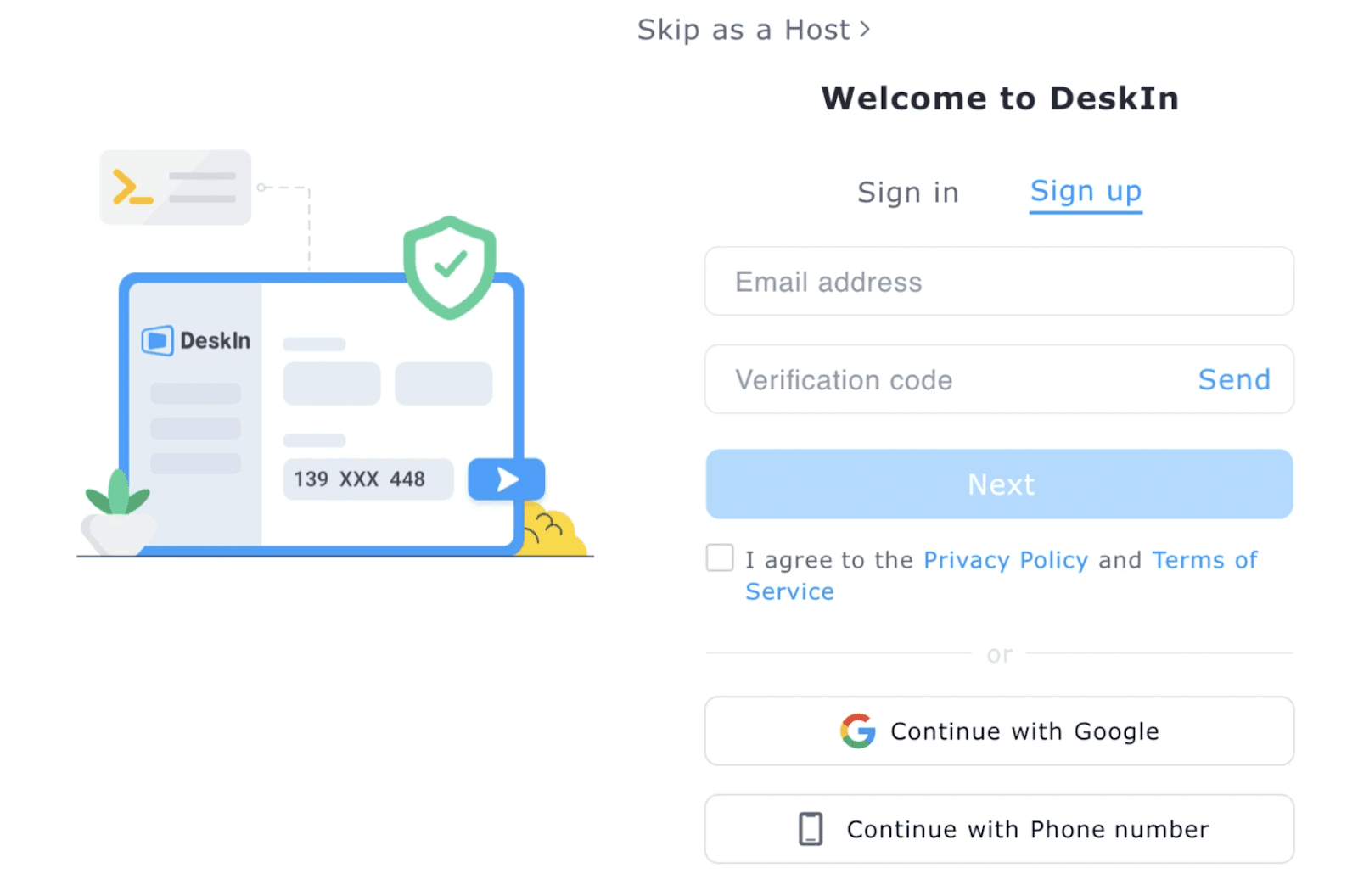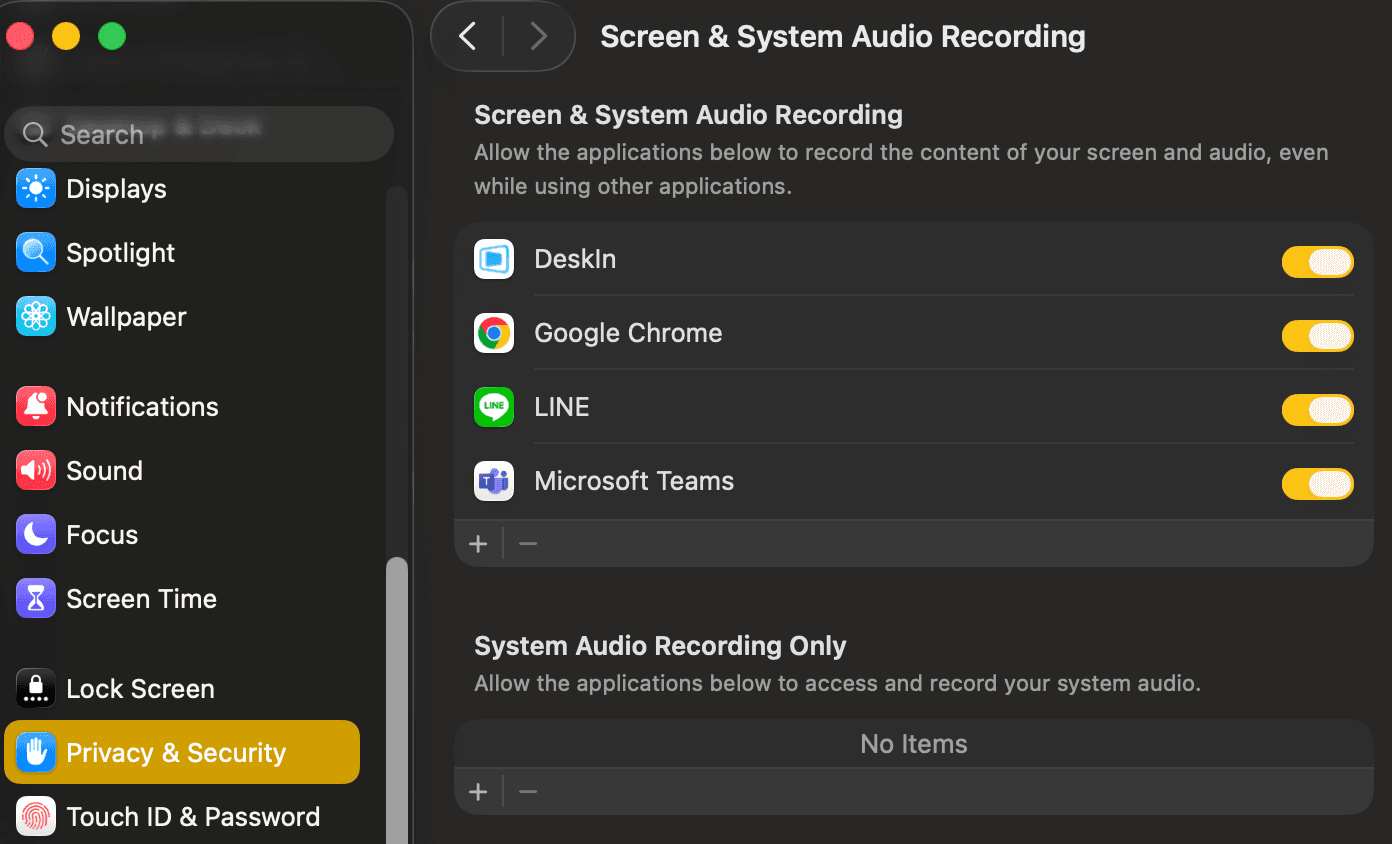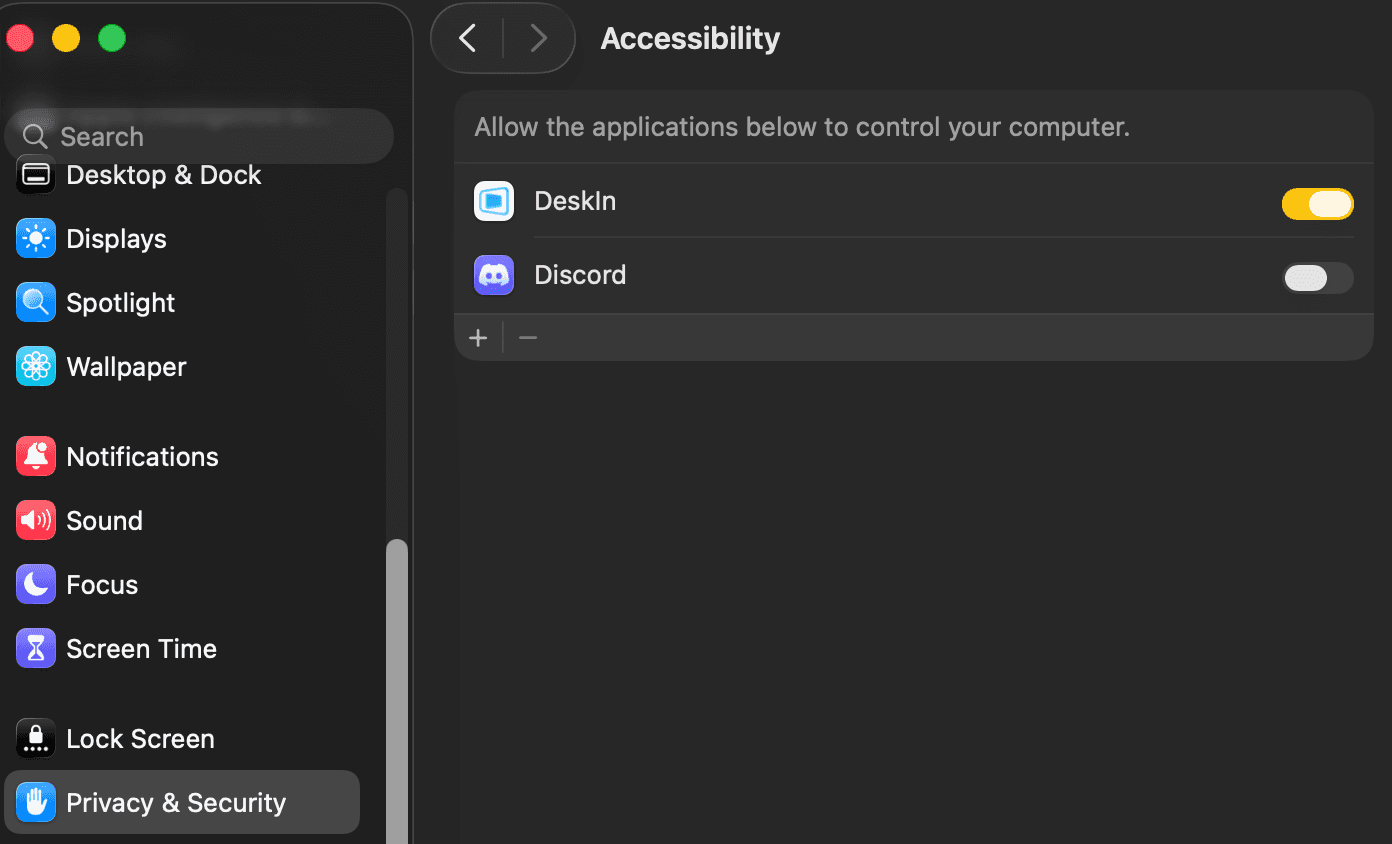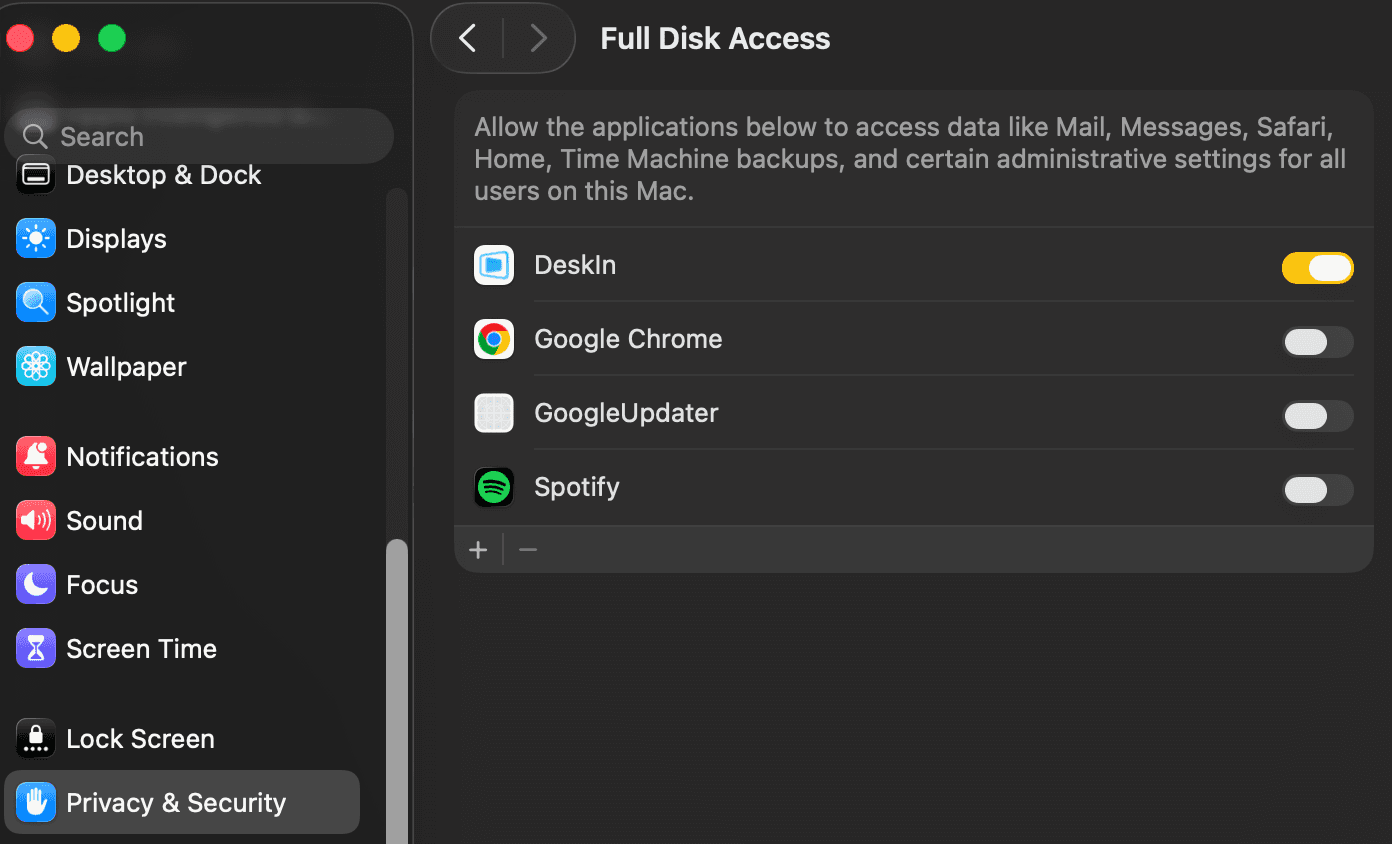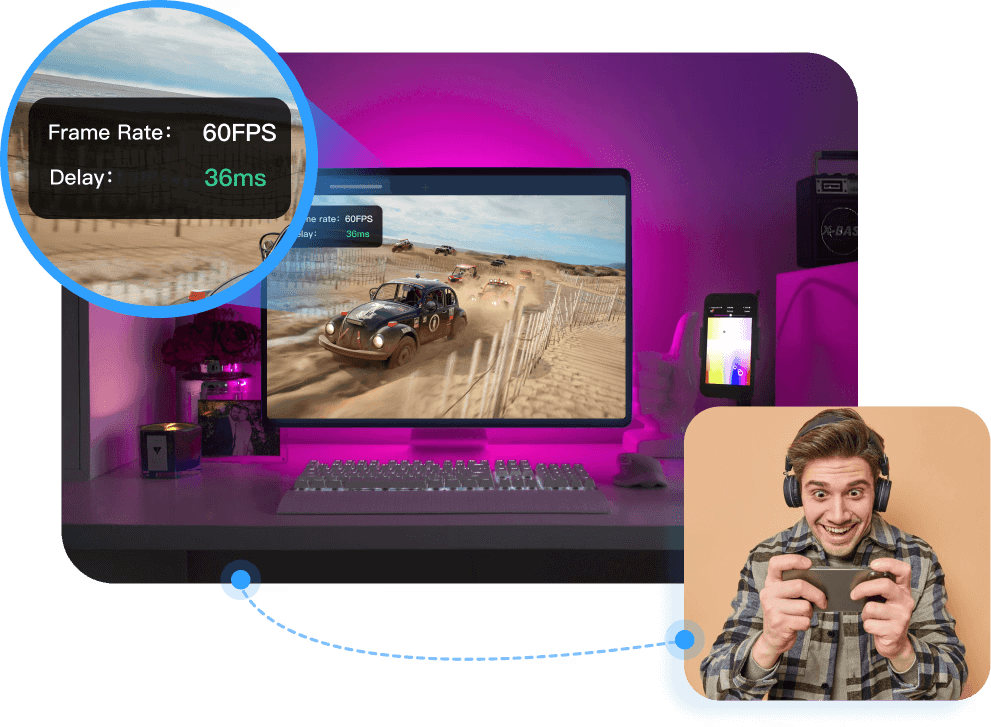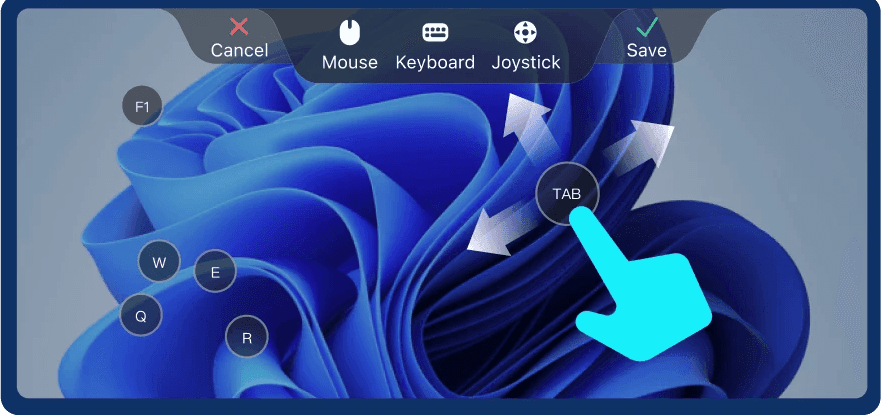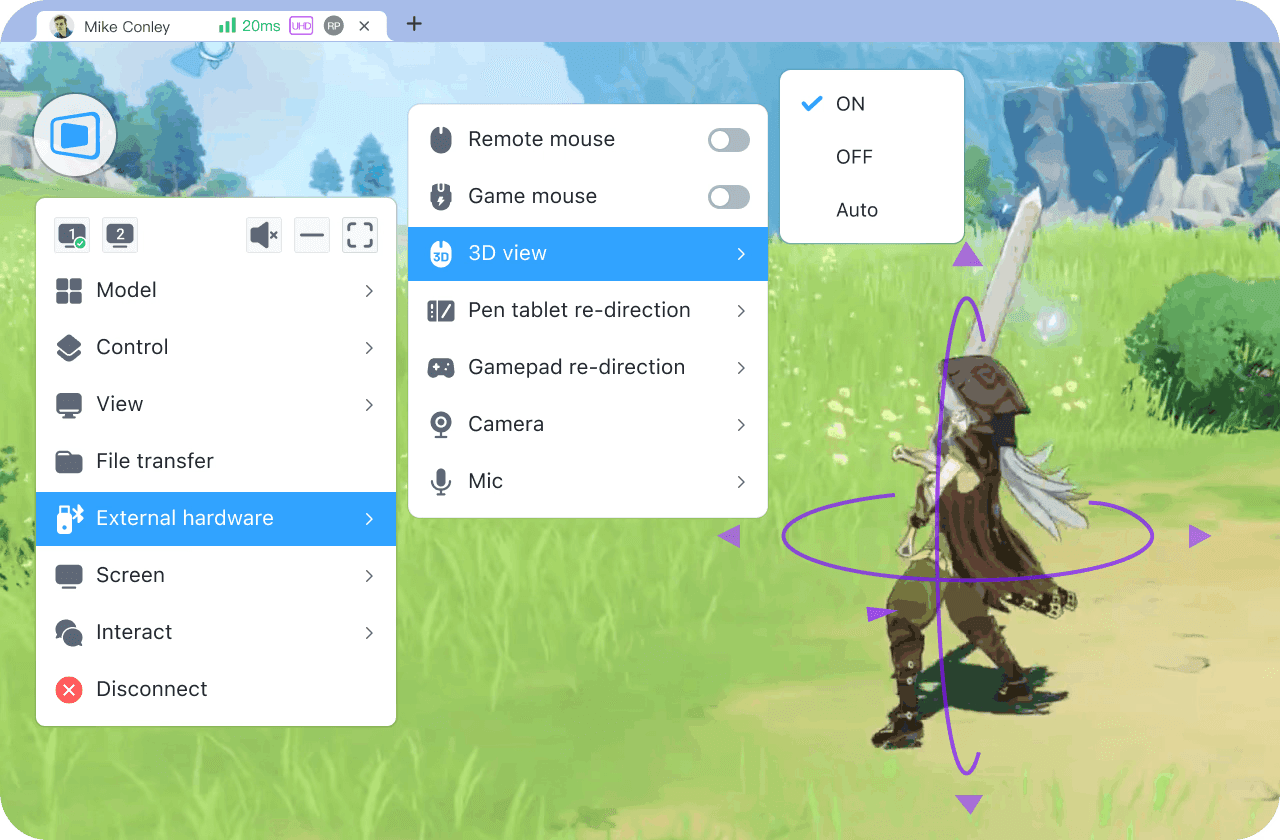While many third-party apps promise to help you remote control Mac from iPhone, their functionality often comes with frustrating restrictions. Some only allow remote viewing without actual control, while others suffer from noticeable screen lag during sessions. These limitations significantly degrade the real-time experience you expect from seamless remote access.
This guide will walk you through the top methods to remotely control your Mac from an iPhone, comparing different tools, their features, and step-by-step setup instructions to help you find the most efficient solution!
When it comes to remotely controlling your Mac from an iPhone, DeskIn stands out as the most efficient and user-friendly solution. Whether you need to access important files, assist a colleague, or operate your Mac from anywhere, DeskIn provides a seamless and secure remote control experience. Below, we'll explore why DeskIn is the best choice, how to set it up, and how to use it for smooth remote access.
DeskIn is a feature-rich remote access tool designed to deliver low-latency, high-performance remote control across various devices. Here's what makes it the best remote app for your iPhone to control your MacBook or iMac.

DeskIn: Best App to Control Mac from iPhone
Control Mac Easily & No Delay: Powered by 200+ global server nodes, DeskIn ensures a high connection success rate, uninterrupted sessions, and minimal delay.
Connect Mac, iMac, and Mac Pro from Most iPhones: Works seamlessly across macOS, iOS, Windows, and Android, allowing you to connect between different devices effortlessly.
Smooth & Stable Experience: Even under low network conditions, DeskIn maintains smooth, lag-free operation, making it ideal for work, gaming, and file transfers.
Secure Remote Access: Includes email verification, a privacy screen, and blacklist/whitelist controls to protect your data and ensure authorized access only.
Remote Control Mac from iPhone by Deskin
Setting up DeskIn is quick and straightforward. Follow these steps to enable remote control of your Mac from your iPhone.
Step 1. Visit the official DeskIn website and download the app for both your Mac and iPhone.

Step 2. Sign up with your email address, verify your identity, and log in to DeskIn on both devices.

Step 3. Follow the on-screen prompts on your Mac to grant DeskIn the necessary system permissions, such as screen recording and accessibility control.
Step 4. Open the DeskIn app on your iPhone, log in, and select your Mac from the available devices list. Once connected, you can smoothly control your Mac using touch gestures, transfer files between devices, run applications remotely, and manage your Mac as if you were sitting right in front of it. Hurry up and try DeskIn by clicking the download button here.


Related Reading:
2. Control Mac via Switch-Control Seamlessly
Switch Control is a built-in accessibility feature on macOS and iOS that allows users to remotely control a Mac from an iPhone. Originally designed for users with physical disabilities, this feature can also be used for general remote access. Unlike Remote Management, Switch Control lets you fully operate your Mac using your iPhone's touchscreen without third-party apps.
Step 1. Click the Apple menu > System Settings > Accessibility > Switch Control, then toggle the Switch Control option ON.
Step 2. Open Settings on your iPhone, go to Accessibility > Switch Control, and turn it ON.

Step 3. Under Switches, tap Add New Switch > External, choose Use Other Device, and select your Mac from the list of available devices.

Step 4. Enter the verification code displayed on your Mac to complete the setup.
Step 5. Now, you can use your iPhone's touchscreen or an external switch device to navigate, click, and interact with your Mac.
What is "Control Nearby Devices"
Another built-in feature of Mac and iPhone is called "Control Nearby Devices". It can simply remote control your Mac from your iPhone, but you need to keep the two devices nearby within around 30 meters. It isn't recommended because of its limited distance and remote functions.
For remote distance and powerful remote functions, try Method one, DeskIn.
Chrome Remote Desktop is a free and reliable tool that allows you to control your Mac remotely from an iPhone. It operates through a Chrome browser extension and provides secure remote access via a Google account. This method is ideal if you prefer a simple setup without additional software installations beyond Chrome. However, you need to use Chrome as your browser for its setup and access.
Step 1. Open Google Chrome on your Mac, go to the Chrome Remote Desktop website, and install the Chrome Remote Desktop extension.
Step 2. Open the Chrome Remote Desktop extension, click Set up remote access, and follow the prompts to enable it.

Step 3. Set a 6-digit PIN that will be required to connect to your Mac remotely.
Step 4. Download and install the Chrome Remote Desktop app from the App Store.
Step 5. Open the Chrome Remote Desktop app on your iPhone, log in using the same Google account linked to your Mac.
Step 6. Select your Mac from the list of available devices, enter the PIN, and start the remote session.
Once connected, you can navigate your Mac using touch gestures or an external keyboard, making it a convenient option for basic remote access.
You May Also Like: How to Use Microsoft Remote Desktop Mac
4. Connect to Mac Remotely by Apple Remote Desktop
Apple Remote Desktop is a comprehensive, macOS-native tool designed for seamless remote management across Apple devices. It empowers you to remote control iTunes Mac from iPhone and perform diverse tasks like file transfers, software installations, and real-time system monitoring. As an official Apple solution, it delivers robust integration for controlling multiple Macs directly from your iPhone.
However, this advanced functionality comes at a cost: a steep purchase price in the Mac App Store. Additionally, its enterprise-focused interface presents a steeper learning curve compared to simpler consumer apps, potentially overwhelming casual users.
STEP 1: Enable Remote Management on your MacBook
Go to System Settings > General > Sharing, toggle on "Remote Management," and grant access permissions.

STEP 2: Download the Apple Remote Desktop app (free) from the App Store and sign in with your Apple ID.
STEP 3: Tap "+" > "Add Computer," enter your Mac's IP address or hostname, and confirm credentials.
STEP 4: Select your Mac from the device list and tap "Control" to start seamless access.
5 More Tools to Remote Control Mac

Jump Desktop: Delivers high performance and ultra-low latency via its proprietary Fluid Remote Desktop protocol. It features robust security with end-to-end encryption, an intuitive interface supporting multi-monitor control, and seamless external device integration.
RealVNC Viewer: A free solution praised for adaptive picture quality and generally smooth operation in ideal conditions. However, connections may work flawlessly during some sessions but fail entirely at other times (e.g., daytime connectivity drops).
Other third-party tools:
TeamViewer
Offers cross-platform support but faces criticism for high costs (commercial plans), laggy performance under low bandwidth, and recurring security vulnerability reports.
Splashtop
A cost-effective alternative to TeamViewer, saving ≥50% annually. It prioritizes ease of setup and user-friendly remote access for Mac, with competitive features like file transfer and multi-monitor support.
AnyDesk
Leverages its DeskRT codec for high-speed connections but lacks bulk discounts, making enterprise deployments expensive. Pricing transparency is limited, and advanced features (e.g., whitelisting) require higher-tier plans without scalable savings .
DeskIn vs Other Remote Control Methods: Which is the Best?
When choosing the best method to remote control a Mac from an iPhone, it's important to compare different solutions based on key factors like performance, security, ease of use, and feature set. Below is a comparison of DeskIn, macOS built-in options, and Chrome Remote Desktop to help you decide.
Feature | macOS Built-in Remote Management | Chrome Remote Desktop | |
|---|---|---|---|
Ease of Use | ✅ User-friendly setup & intuitive UI | ❌ Requires manual configuration | ✅ Easy browser-based access |
Performance | ✅ Low-latency, high-speed connection | ❌ Performance depends on the network | ❌ Can be laggy over weak connections |
Security | ✅ End-to-end encryption, 2FA, and privacy screen | ✅ Secure but requires proper configuration | ✅ Encrypted, but less control over security settings |
Cross-Platform Compatibility | ✅ Works on macOS, Windows, iOS, and Android | ❌ Only works within the Apple ecosystem | ✅ Works across multiple platforms |
File Transfer Support | ✅ Yes, built-in file sharing | ❌ Limited file sharing options | ❌ No built-in file transfer |
Internet Requirement | ✅ Works efficiently even on low bandwidth | ✅ Works well on LAN, but external access may require extra setup | ❌ Requires a stable internet connection for smooth operation |
As you can see, DeskIn stands out with low-latency performance, strong security features like end-to-end encryption and 2FA, and cross-platform compatibility across macOS, Windows, iOS, and Android. Unlike Chrome Remote Desktop, it also supports easy file transfers, making it the most reliable and feature-rich option for remotely controlling your Mac from an iPhone.
You May Also Like: Comparison of 3 Free Remote Desktop Software
Essential Security Tips for Remotely Controlling Your Mac
To keep your Mac secure while using remote access, follow these best practices:
Use Strong Passwords & Enable 2FA: Always set a complex, unique password for your DeskIn and Google accounts, and activate two-factor authentication (2FA) for an extra layer of security.
Enable DeskIn's Privacy Features: Turn on the privacy screen to block unauthorized viewing during remote sessions. Use DeskIn's whitelist and blacklist settings to control exactly who can access your Mac.
Regularly Update Passwords: Change your remote access passwords periodically to minimize the risk of unauthorized access.
Keep Software Updated: Make sure your macOS, DeskIn app, and any remote access tools are always up to date to patch security vulnerabilities.
Use a Secure Network: Avoid connecting over public Wi-Fi whenever possible. Use a trusted VPN to encrypt your connection and protect your data when accessing your Mac remotely.
By following these security measures, you can protect your data and privacy while enjoying seamless remote access to your Mac.
FAQs About Remotely Controlling Mac from iPhone
Can I control my Mac from my iPhone for free?
Yes, both DeskIn's free version and macOS remote management offer free remote access. However, Apple's Switch Control feature is not very user-friendly while operating. Therefore, we recommend using DeskIn as your free tool for Mac remote control, or upgrading to its premium version to get better performance, security, and additional features.
Is it possible to control my Mac from anywhere?
Yes, it is. As long as both your Mac and iPhone are connected to the internet, you can remotely access and control your Mac using DeskIn, no matter where you are.
Conclusion
Remotely controlling your Mac from an iPhone enhances productivity, remote support, and overall convenience. While macOS built-in tools and Chrome Remote Desktop provide basic functionality, and Apple Remote Desktop costs a lot, DeskIn stands out with its superior stability, security, and feature-rich experience. For the best remote access solution, try DeskIn today and enjoy seamless, secure control of your Mac from anywhere!

While many third-party apps promise to help you remote control Mac from iPhone, their functionality often comes with frustrating restrictions. Some only allow remote viewing without actual control, while others suffer from noticeable screen lag during sessions. These limitations significantly degrade the real-time experience you expect from seamless remote access.
This guide will walk you through the top methods to remotely control your Mac from an iPhone, comparing different tools, their features, and step-by-step setup instructions to help you find the most efficient solution!
When it comes to remotely controlling your Mac from an iPhone, DeskIn stands out as the most efficient and user-friendly solution. Whether you need to access important files, assist a colleague, or operate your Mac from anywhere, DeskIn provides a seamless and secure remote control experience. Below, we'll explore why DeskIn is the best choice, how to set it up, and how to use it for smooth remote access.
DeskIn is a feature-rich remote access tool designed to deliver low-latency, high-performance remote control across various devices. Here's what makes it the best remote app for your iPhone to control your MacBook or iMac.

DeskIn: Best App to Control Mac from iPhone
Control Mac Easily & No Delay: Powered by 200+ global server nodes, DeskIn ensures a high connection success rate, uninterrupted sessions, and minimal delay.
Connect Mac, iMac, and Mac Pro from Most iPhones: Works seamlessly across macOS, iOS, Windows, and Android, allowing you to connect between different devices effortlessly.
Smooth & Stable Experience: Even under low network conditions, DeskIn maintains smooth, lag-free operation, making it ideal for work, gaming, and file transfers.
Secure Remote Access: Includes email verification, a privacy screen, and blacklist/whitelist controls to protect your data and ensure authorized access only.
Remote Control Mac from iPhone by Deskin
Setting up DeskIn is quick and straightforward. Follow these steps to enable remote control of your Mac from your iPhone.
Step 1. Visit the official DeskIn website and download the app for both your Mac and iPhone.

Step 2. Sign up with your email address, verify your identity, and log in to DeskIn on both devices.

Step 3. Follow the on-screen prompts on your Mac to grant DeskIn the necessary system permissions, such as screen recording and accessibility control.
Step 4. Open the DeskIn app on your iPhone, log in, and select your Mac from the available devices list. Once connected, you can smoothly control your Mac using touch gestures, transfer files between devices, run applications remotely, and manage your Mac as if you were sitting right in front of it. Hurry up and try DeskIn by clicking the download button here.


Related Reading:
2. Control Mac via Switch-Control Seamlessly
Switch Control is a built-in accessibility feature on macOS and iOS that allows users to remotely control a Mac from an iPhone. Originally designed for users with physical disabilities, this feature can also be used for general remote access. Unlike Remote Management, Switch Control lets you fully operate your Mac using your iPhone's touchscreen without third-party apps.
Step 1. Click the Apple menu > System Settings > Accessibility > Switch Control, then toggle the Switch Control option ON.
Step 2. Open Settings on your iPhone, go to Accessibility > Switch Control, and turn it ON.

Step 3. Under Switches, tap Add New Switch > External, choose Use Other Device, and select your Mac from the list of available devices.

Step 4. Enter the verification code displayed on your Mac to complete the setup.
Step 5. Now, you can use your iPhone's touchscreen or an external switch device to navigate, click, and interact with your Mac.
What is "Control Nearby Devices"
Another built-in feature of Mac and iPhone is called "Control Nearby Devices". It can simply remote control your Mac from your iPhone, but you need to keep the two devices nearby within around 30 meters. It isn't recommended because of its limited distance and remote functions.
For remote distance and powerful remote functions, try Method one, DeskIn.
Chrome Remote Desktop is a free and reliable tool that allows you to control your Mac remotely from an iPhone. It operates through a Chrome browser extension and provides secure remote access via a Google account. This method is ideal if you prefer a simple setup without additional software installations beyond Chrome. However, you need to use Chrome as your browser for its setup and access.
Step 1. Open Google Chrome on your Mac, go to the Chrome Remote Desktop website, and install the Chrome Remote Desktop extension.
Step 2. Open the Chrome Remote Desktop extension, click Set up remote access, and follow the prompts to enable it.

Step 3. Set a 6-digit PIN that will be required to connect to your Mac remotely.
Step 4. Download and install the Chrome Remote Desktop app from the App Store.
Step 5. Open the Chrome Remote Desktop app on your iPhone, log in using the same Google account linked to your Mac.
Step 6. Select your Mac from the list of available devices, enter the PIN, and start the remote session.
Once connected, you can navigate your Mac using touch gestures or an external keyboard, making it a convenient option for basic remote access.
You May Also Like: How to Use Microsoft Remote Desktop Mac
4. Connect to Mac Remotely by Apple Remote Desktop
Apple Remote Desktop is a comprehensive, macOS-native tool designed for seamless remote management across Apple devices. It empowers you to remote control iTunes Mac from iPhone and perform diverse tasks like file transfers, software installations, and real-time system monitoring. As an official Apple solution, it delivers robust integration for controlling multiple Macs directly from your iPhone.
However, this advanced functionality comes at a cost: a steep purchase price in the Mac App Store. Additionally, its enterprise-focused interface presents a steeper learning curve compared to simpler consumer apps, potentially overwhelming casual users.
STEP 1: Enable Remote Management on your MacBook
Go to System Settings > General > Sharing, toggle on "Remote Management," and grant access permissions.

STEP 2: Download the Apple Remote Desktop app (free) from the App Store and sign in with your Apple ID.
STEP 3: Tap "+" > "Add Computer," enter your Mac's IP address or hostname, and confirm credentials.
STEP 4: Select your Mac from the device list and tap "Control" to start seamless access.
5 More Tools to Remote Control Mac

Jump Desktop: Delivers high performance and ultra-low latency via its proprietary Fluid Remote Desktop protocol. It features robust security with end-to-end encryption, an intuitive interface supporting multi-monitor control, and seamless external device integration.
RealVNC Viewer: A free solution praised for adaptive picture quality and generally smooth operation in ideal conditions. However, connections may work flawlessly during some sessions but fail entirely at other times (e.g., daytime connectivity drops).
Other third-party tools:
TeamViewer
Offers cross-platform support but faces criticism for high costs (commercial plans), laggy performance under low bandwidth, and recurring security vulnerability reports.
Splashtop
A cost-effective alternative to TeamViewer, saving ≥50% annually. It prioritizes ease of setup and user-friendly remote access for Mac, with competitive features like file transfer and multi-monitor support.
AnyDesk
Leverages its DeskRT codec for high-speed connections but lacks bulk discounts, making enterprise deployments expensive. Pricing transparency is limited, and advanced features (e.g., whitelisting) require higher-tier plans without scalable savings .
DeskIn vs Other Remote Control Methods: Which is the Best?
When choosing the best method to remote control a Mac from an iPhone, it's important to compare different solutions based on key factors like performance, security, ease of use, and feature set. Below is a comparison of DeskIn, macOS built-in options, and Chrome Remote Desktop to help you decide.
Feature | macOS Built-in Remote Management | Chrome Remote Desktop | |
|---|---|---|---|
Ease of Use | ✅ User-friendly setup & intuitive UI | ❌ Requires manual configuration | ✅ Easy browser-based access |
Performance | ✅ Low-latency, high-speed connection | ❌ Performance depends on the network | ❌ Can be laggy over weak connections |
Security | ✅ End-to-end encryption, 2FA, and privacy screen | ✅ Secure but requires proper configuration | ✅ Encrypted, but less control over security settings |
Cross-Platform Compatibility | ✅ Works on macOS, Windows, iOS, and Android | ❌ Only works within the Apple ecosystem | ✅ Works across multiple platforms |
File Transfer Support | ✅ Yes, built-in file sharing | ❌ Limited file sharing options | ❌ No built-in file transfer |
Internet Requirement | ✅ Works efficiently even on low bandwidth | ✅ Works well on LAN, but external access may require extra setup | ❌ Requires a stable internet connection for smooth operation |
As you can see, DeskIn stands out with low-latency performance, strong security features like end-to-end encryption and 2FA, and cross-platform compatibility across macOS, Windows, iOS, and Android. Unlike Chrome Remote Desktop, it also supports easy file transfers, making it the most reliable and feature-rich option for remotely controlling your Mac from an iPhone.
You May Also Like: Comparison of 3 Free Remote Desktop Software
Essential Security Tips for Remotely Controlling Your Mac
To keep your Mac secure while using remote access, follow these best practices:
Use Strong Passwords & Enable 2FA: Always set a complex, unique password for your DeskIn and Google accounts, and activate two-factor authentication (2FA) for an extra layer of security.
Enable DeskIn's Privacy Features: Turn on the privacy screen to block unauthorized viewing during remote sessions. Use DeskIn's whitelist and blacklist settings to control exactly who can access your Mac.
Regularly Update Passwords: Change your remote access passwords periodically to minimize the risk of unauthorized access.
Keep Software Updated: Make sure your macOS, DeskIn app, and any remote access tools are always up to date to patch security vulnerabilities.
Use a Secure Network: Avoid connecting over public Wi-Fi whenever possible. Use a trusted VPN to encrypt your connection and protect your data when accessing your Mac remotely.
By following these security measures, you can protect your data and privacy while enjoying seamless remote access to your Mac.
FAQs About Remotely Controlling Mac from iPhone
Can I control my Mac from my iPhone for free?
Yes, both DeskIn's free version and macOS remote management offer free remote access. However, Apple's Switch Control feature is not very user-friendly while operating. Therefore, we recommend using DeskIn as your free tool for Mac remote control, or upgrading to its premium version to get better performance, security, and additional features.
Is it possible to control my Mac from anywhere?
Yes, it is. As long as both your Mac and iPhone are connected to the internet, you can remotely access and control your Mac using DeskIn, no matter where you are.
Conclusion
Remotely controlling your Mac from an iPhone enhances productivity, remote support, and overall convenience. While macOS built-in tools and Chrome Remote Desktop provide basic functionality, and Apple Remote Desktop costs a lot, DeskIn stands out with its superior stability, security, and feature-rich experience. For the best remote access solution, try DeskIn today and enjoy seamless, secure control of your Mac from anywhere!


Play x Work
All at Once
DeskIn Remote Game
only $14.32 USD 🎉 Limited on July 16-31
Add promo code: deskinsummer1






